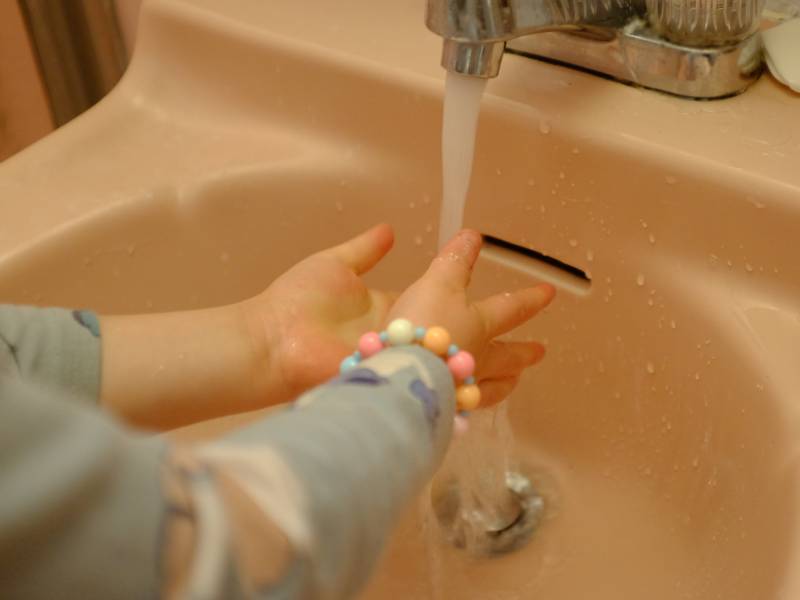One of the reasons “wash your hands” became the mantra of the coronavirus epidemic, is that the virus has a knack for sticking around on surfaces and can be transmitted from an infected person before they have symptoms, or from someone who is infected but may not ever develop symptoms.
And while your friends may be lamenting the lack of hand sanitizer, it’s not really hand sanitizer that’s going to do the best job–it’s washing your hands, scrubbing with soap and water, for 20 seconds. The Centers for Disease Control and Prevention recommends this not because it’s some arbitrary length of time, but because there’s actually science behind why it works.
What’s going on during that 20 seconds, if you happen to have picked up any viral hitchhikers on your hands, is that soap is breaking down the novel coronavirus and others like it by removing the fatty membrane – or envelope – that surrounds it.
One end of the soap molecule is attracted to that membrane, and the other is attracted to water. So when you wash your hands, the soap attaches to the fatty membrane and pulls on it, and the virus falls apart, making it inactive.
1/25 Part 1 – Why does soap work so well on the SARS-CoV-2, the coronavirus and indeed most viruses? Because it is a self-assembled nanoparticle in which the weakest link is the lipid (fatty) bilayer. A two part thread about soap, viruses and supramolecular chemistry #COVID19 pic.twitter.com/OCwqPjO5Ht
— Palli Thordarson (@PalliThordarson) March 8, 2020
2/25 The soap dissolves the fat membrane and the virus falls apart like a house of cards and “dies”, or rather, we should say it becomes inactive as viruses aren’t really alive. Viruses can be active outside the body for hours, even days.
— Palli Thordarson (@PalliThordarson) March 8, 2020
The process is similar to the way soap attacks oils and grease.
Rubbing your soapy hands together also creates friction that removes germs from your skin and sends them down the drain.
All this takes time, which is why infectious disease experts say to wash your hands with soap and water for 20 seconds.
Studies have shown that regular soap is generally just as effective as antibacterial soap, and doctors say warm or cold water both work just fine.
Here’s a quick guide to getting it right:
Wet your hands with clean, running water (warm or cold), then turn off the tap and apply soap.
Lather your hands by rubbing them together with the soap. Be sure to get the back of your hands, between your fingers and under nails. Don’t forget your thumbs!
Scrub for at least 20 seconds. You probably know that’s Happy Birthday (twice) or the ABCs all the way through. One of my favorites is the last song on The Beatles’ Abbey Road album, “Her Majesty.” It times out perfectly.
Rinse well under clean, running water.
Dry your hands with a clean towel – germs are transferred more easily to and from wet hands.
Good times to wash your hands are whenever you’ve been in a public place, or brought stuff into your home – like mail or groceries – and definitely after coughing or blowing your nose. You should also wash them before preparing or eating food and before and after caring for someone who is sick.
And remember, don’t touch your face with unwashed hands!
Get more guidelines and tips from the CDC here.

